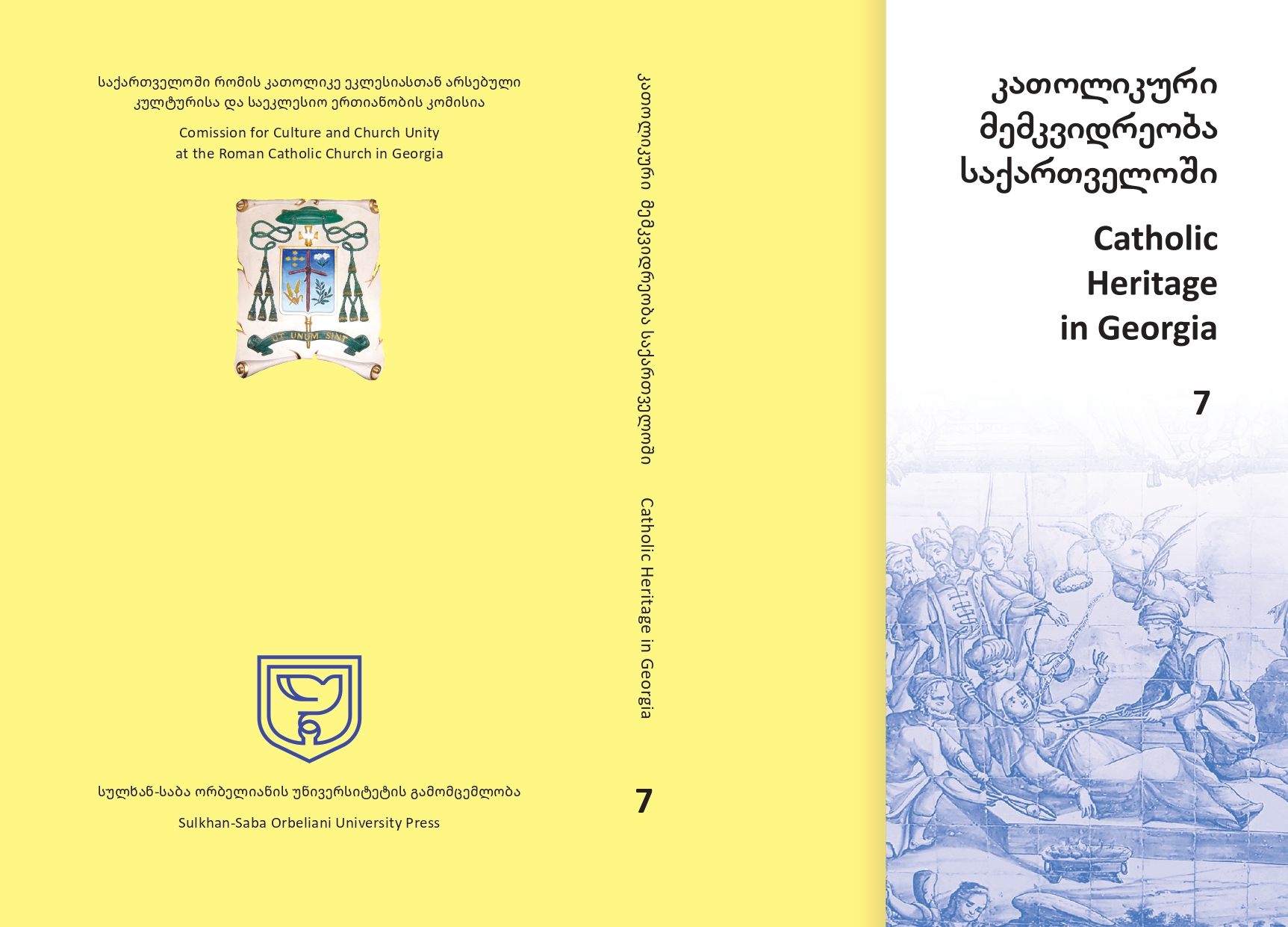ემანუელ ვარდიძის კალენდარი კალისტრატე ცინცაძის არქივში
DOI:
https://doi.org/10.52340/chg.2024.07.13ანოტაცია
This study examines a previously unknown archival document discovered within the personal collection of Catholicos-Patriarch Kalistrate Tsintsadze (1866-1952), housed at the Korneli Kekelidze National Centre of Manuscripts of Georgia. The document, catalogued as „’1927 წლის კათოლიკე ეკლესიის კალენდარი’. – გამოც. პ. ემანუილ ვარდიძისა [1927 Catholic Church Calendar.
– Published by P. Emanuel Vardidze],“ represents a significant archival discovery absent from the documented bibliography of „ქართული წიგნი [Georgian Book]“ and unreferenced in existing scholarly literature. The artifact is a bilingual wall calendar titled „1927 წლის კათოლიკე ეკლესიის კალენდარი. 1927. Римско-католический календарь на 1927 год [1927 Catholic Church Calendar].“ Produced on high-quality white printing paper with exceptional typographical craftsmanship, the calendar presents both civil
and ecclesiastical observances in Georgian and Russian. Notably, supplementary information including editorial attribution (“Published by P. Emanuel Vardidze”), censorship approval, and printing details appear exclusively in Georgian, suggesting formal publication under the communist-atheistic regime. “P. Emanuel Vardidze“ refers to Padre Emanuel Vardidze (1886-1966), a
distinguished ecclesiastical and public figure educated in Rome with multilingual capabilities and authority to celebrate liturgical rites in Latin, Greek, and Assyrian-Chaldean traditions. Despite persecution, repeated arrests, and exile under Soviet authorities, he served as Apostolic Administrator of the Catholic Church of Georgia until his death. His under-researched biography gains significant scholarly value through recently discovered archival materials, including this calendar, church registers from the village of Ude, reports to the Council of Ministers of Georgia regarding Catholic churches, and documentation of his 1928 arrest during an attempted illegal border crossing into Turkey, as reported in the „კომუნისტი“ [Communist] newspaper. The calendar holds considerable analytical significance from multiple perspectives. It represents the first Georgian Catholic Church calendar to
adopt the Gregorian system, replacing the previously used Julian calendar, and stands as the sole example of Catholic publication produced under Soviet rule. The historical context of its production and distribution contributes substantially to understanding Emanuel Vardidze’s biographical and intellectual profile, offering new insights into Catholic Church survival strategies during
one of the most repressive periods in Georgian religious history.








